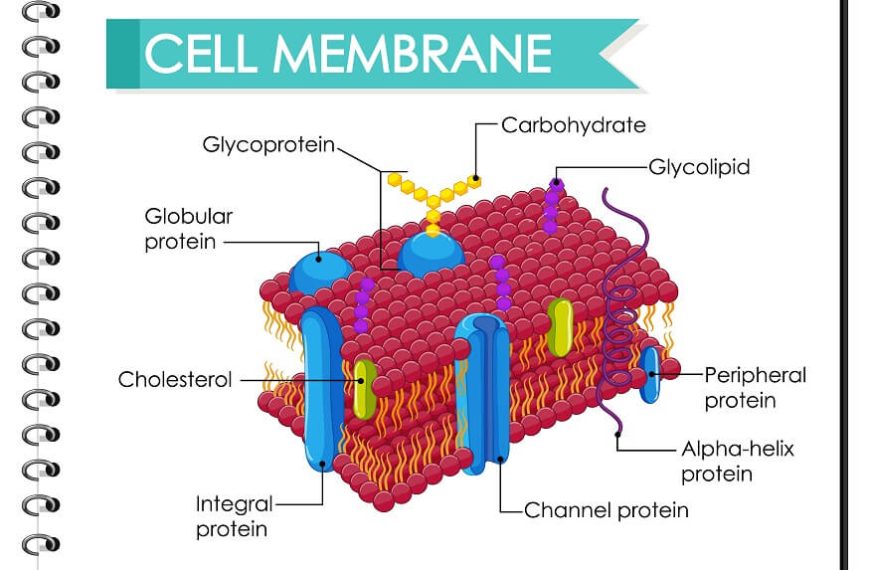Cells are the fundamental units of life. They serve as the building blocks of every living thing. They are a cornerstone of biology because cells carry out the functions and processes that are essential for the existence of life itself. In this article, we will explore the fascinating world of cells by delving into the following points:
- What is a cell?
- Types of cells
- Cell structure and function
What is a cell?
A cell is a minute, self-contained unit that forms the basic structural and functional unit of all living organisms present. Each cell is similar to a microscopic city, with its own set of functions, structure, and even its own blueprint for replication. Some key points about cells:
- Basic structural unit: Cells are the smallest and basic structural units of life. They are often referred to as the “building blocks” of living organisms.
- Diverse and multifunctional: Cells come in various shapes and sizes. They are adapted to perform specific and different functions in an organism. Diverse types of cells help with specialisation of the multifunctional aspect of the organism.
Types of cells
Cells exhibit tremendous diversity in them, which is significant to understand the different lifeforms on this planet. There are two primary types of cells: prokaryotic and eukaryotic cells. We will explain these primary types in more detail.
Prokaryotic Cells
Characteristics:
- Lack of membrane-bound organelles: Prokaryotic cells are very simple in structure. They do not have membrane-bound organelles like the nucleus.
- Single cell organisms: Most of the prokaryotes are unicellular organisms. They include bacteria and archaea.
- Circular DNA: The genetic material is commonly known as the DNA. The DNA in prokaryotic cells is found in a singular and circular chromosome.
- Ribosomes: The cellular machinery responsible for protein synthesis are called ribosomes. Prokaryotic cells have ribosomes.
Function:
- Prokaryotic cells are known for their efficiency as well as their adaptability. They can thrive under different types of environments. They help with nutrient recycling and in the process of some diseases.
Eukaryotic Cells
Characteristics:
- Membrane-bound organelles: Eukaryotic cells are more complex in structure and have membrane-bound organelles including the nucleus.
- Multicellular and unicellular organisms: Eukaryotic cells are found in both multicellular and unicellular organisms. Examples for multicellular organisms are plants, animals, and fungi. An example for unicellular organisms with eukaryotic cells is protists.
- Linear DNA: The genetic material in eukaryotic cells is structured into multiple linear chromosomes.
- Nucleus: Nucleus is present in these cells, which houses the genetic material. It is the central control centre of the cell.
Function:
- Eukaryotic cells are highly specialised and they make up most of the complex multicellular organisms on this planet. They perform a wide range of functions, including energy production, cellular communication, and tissue differentiation.
Cell structure and function:
The cell structure is an intricate and well-organised system. Various organelles and components work together in a cell in order to sustain life. We will explore the key components of cell structure as well as each of their functions.
1 Cell Membrane:
- The role of a cell membrane is to support and protect the cell. It controls what substance goes in and out of the cell, ensuring a stable internal environment. It separates the cell from the outer environment and is present in all cells.
- Cell membrane is the outer covering of the other organelles like cytoplasm and nucleus.
- It is a porous membrane which helps in selective movement of substances in and out of the cell and protects the cell components from leakage or damage.
- It forms the wall-like structure between two cells and between a cell and its surroundings.
- As plants are immobile in nature, the cell membrane is adapted to safeguard them from the external factors.
2 Cell Wall
- The most prominent part of a cell is the cell wall. It consists of cellulose, hemicellulose, and pectin.
- The cell wall is found exclusively in plant cells. It protects the cell membrane and other cellular components.
- The structure of a cell wall is rigid and stiff.
- It provides support to the cell. It also gives shape to the cell. These minimise mechanical shock and injuries.
3 Cytoplasm:
- The cytoplasm is a semi-fluid substance that fills the cell and houses various organelles.
- Most of the chemical reactions in a cell take place here.
4 Nucleus:
- The nucleus houses the DNA, the genetic material of an organism.
- Nucleus is responsible for sending the signal to the cell to grow, mutate, divide, and die.
- The DNA is separated from the rest of the cell by the nuclear envelope.
5 Cell Organelles:
- Various cell organelles carry out certain functions for the organism to sustain life.
- Nucleolus: It is the site of ribosome synthesis. It is also responsible for controlling cellular activities as well as cellular reproduction.
- Nuclear membrane: It is the protective layer between nucleus and other cell organelles.
- Chromosomes: Chromosomes play the role of determining the sex of an individual. In humans, each cell has 23 pairs of chromosomes.
- Endoplasmic Reticulum: It transports substances throughout the cell. It also plays a primary role in synthesis of lipids, steroids, and proteins.
- Golgi Bodies: They are called the post office of the cell. It is involved in the transportation of substances within the cell.
- Mitochondria: It is commonly known as the “powerhouse of the cell” because it produces energy through cellular respiration.
- Lysosomes: They are a protective factor as they engulf foreign bodies entering the cell. They help in cell renewal. They are called the suicide bags of the cell.
- Chloroplast: It is the primary organelle for the process of photosynthesis as it contains the pigment called chlorophyll which enables photosynthesis.
- Vacuoles: They are responsible for storing food, water, and waste material in the cells.
- Ribosomes: They synthesise protein in the cell.
Cells are the building blocks of life. Apart from the basics of what a cell is, it is important to know about the types of cell, cell structure and function in order to unravel the mysteries of biology. The vast diversity of cell types, cell structure, and cell function is the reason we see life as life exists around us. Cells are a testament to the awe-inspiring beauty of biology.
For more information, visit EuroKids, or visit a centre nearest to you.
















